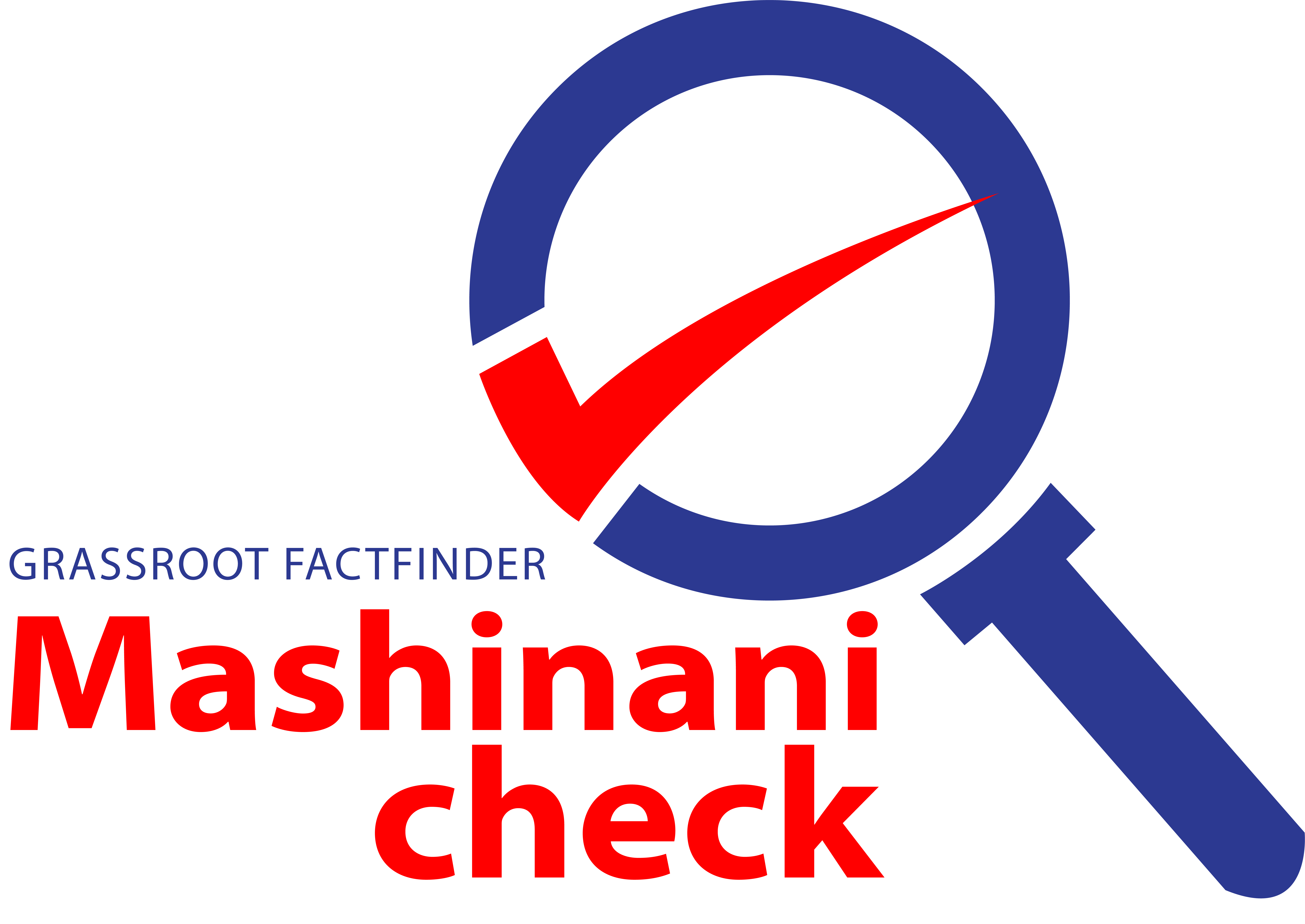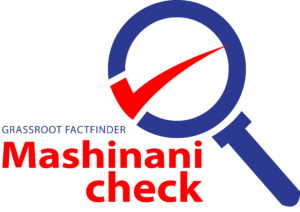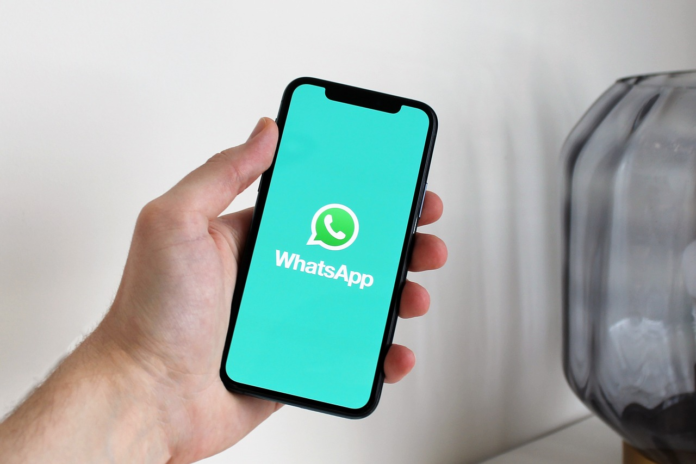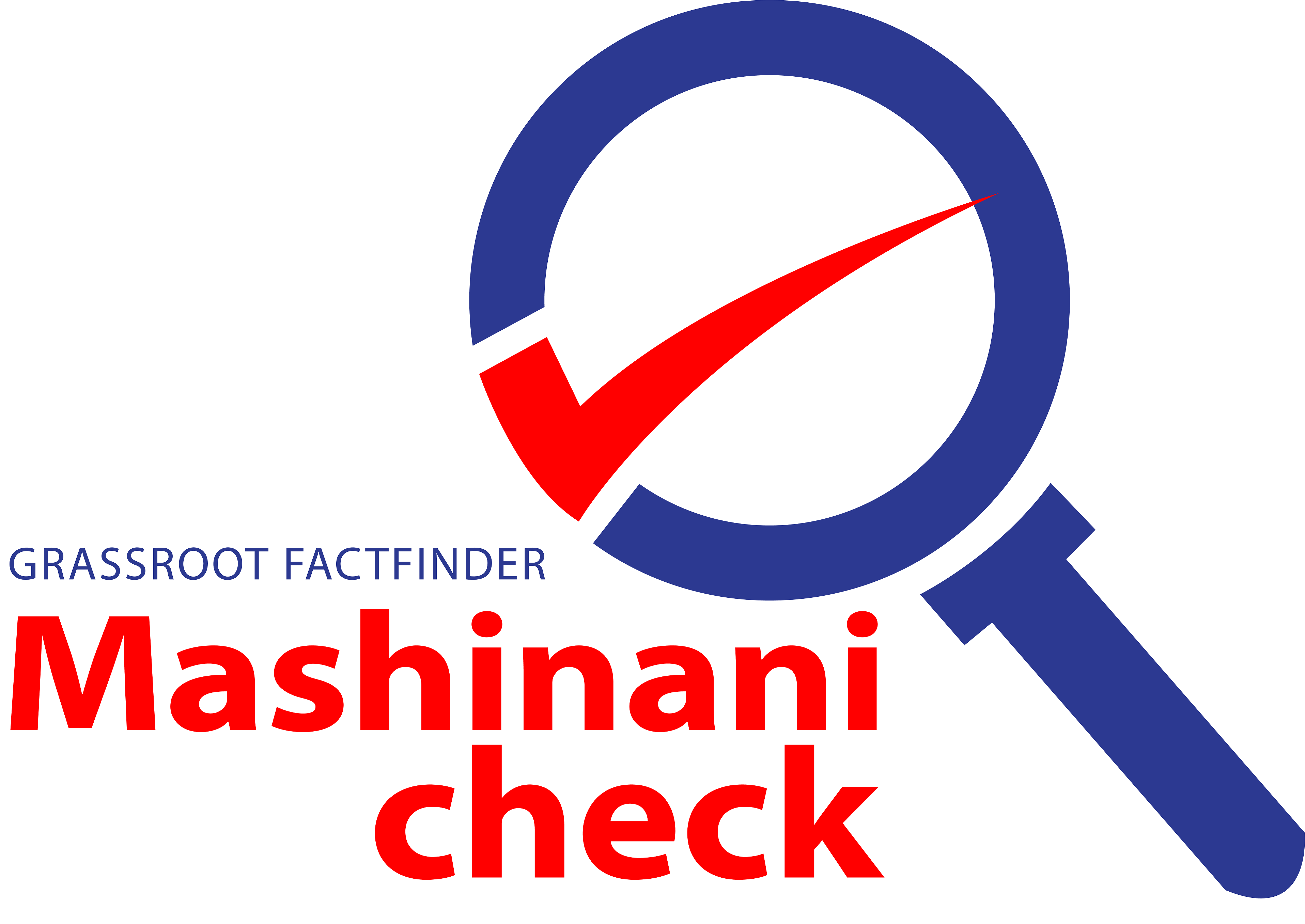By Laura Kapelari
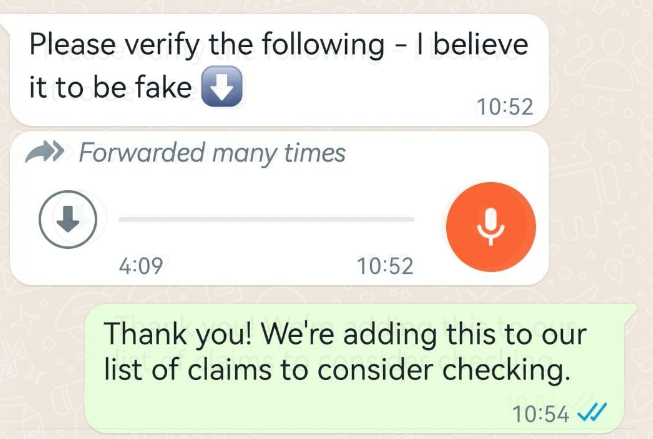
Misinformation on WhatsApp can be difficult to detect and verify, especially when it comes from trusted friends and family members. Africa Check has fact-checked many WhatsApp claims that take the form of text, image and video. But one of the more difficult forms of media to verify is voice notes.
Having (wo)manned the Africa Check WhatsApp line for over five years, I’ve come across my fair share of viral voice notes being shared on the platform.
From warnings to stock up on supplies before national blackouts and conspiracy theories about a “great reset” of global currencies, to homemade remedies for Covid-19 during a lockdown, I’ve heard more dodgy advice via voice notes than I care to remember.
But what can you do if you’ve been sent one of these untraceable suckers? Although it can be difficult to verify voice notes, we do have some tips to help you get the facts right.
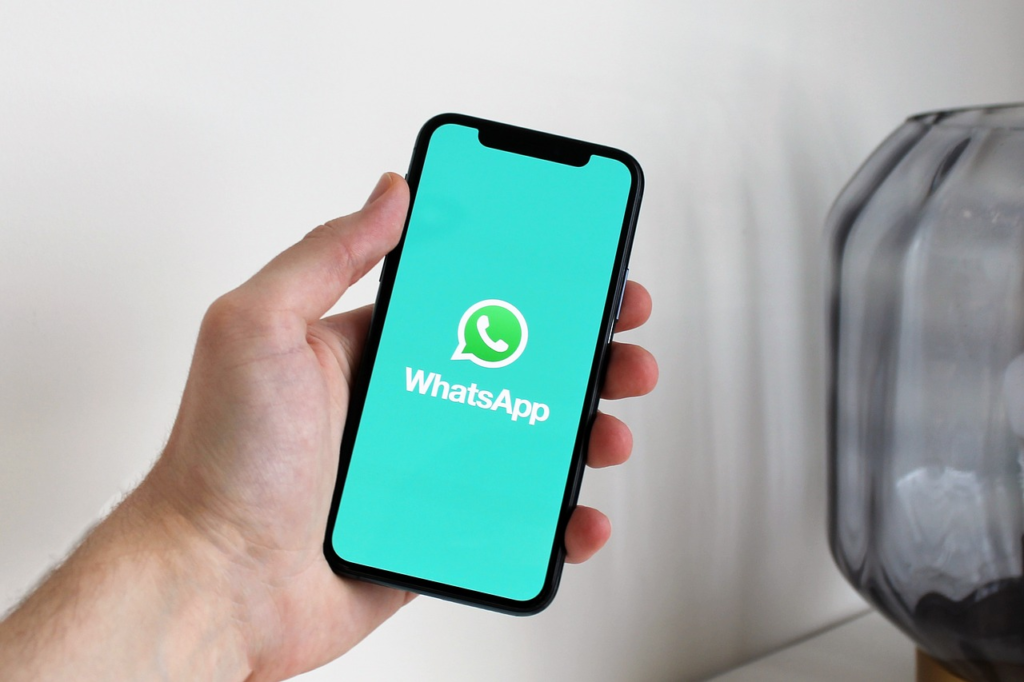
The Number One rule
The most important rule of all, and we put it at the top so that you remember it, is not to forward, send or otherwise share a voice note you receive if you’re even slightly unsure about where it came from and what it claims.
We can and should all do our part to avoid sharing false information. Forwarding unverified claims can have all sorts of unintended consequences, so make sure you are not part of this vicious cycle.
Now that we’ve established the most important rule to live by, here are some tips to help you avoid believing or sharing false claims made in a voice note.
1. Who is behind the voice?
First up, beware of anonymous voice notes. If the person doesn’t identify themselves and who they represent, can you trust the message? And if they do mention a name or organisation, can you verify it with an online search?
During the #ShutdownSA protests that took place in South Africa in 2021, a viral WhatsApp voice note, also posted on Twitter, claimed that grocery retailer Spar had arranged for the “army” to be deployed. It also claimed that the South African police had appealed to the public for help.
Your first clue not to trust the “shoot to kill” order in the voice note was that the person speaking did not identify themselves or say where they were from.
Africa Check’s next step was to contact the National Joint Operational and Intelligence Structure, whose spokesperson Col Brenda Muridili confirmed that the “police never issued a statement requesting communities with firearms to assist”.
It’s always a good idea to check the accuracy of information with the relevant organisation, in this case South Africa’s law enforcement agency. Sometimes just checking an organisation’s social media channels or the press releases section of their website will give you the information you need.
2. Is it a fake?
But what if the voice note claims to be from an official or well-known person? Your first step would be to compare it to known samples of that person’s voice by searching for existing recordings on platforms such as YouTube or news sites.
If a high-profile person has made a claim that goes viral on WhatsApp, it’s also likely to be covered by the media. If the story hasn’t made the news, it’s a red flag that you’re dealing with a fake.
Does the voice note match the person’s voice? If not, it could be a fake. A synthetic voice is an artificial voice generated by a computer. One popular method is to use artificial intelligence (AI) technology to create a “voice skin”, in which a digital copy of a real person’s voice is created and then used to generate new voices.
In April 2023, we debunked a widely shared video in which South African president Cyril Ramaphosa allegedly suggested demolishing two prominent structures – the Voortrekker Monument and the Loftus Versfeld rugby stadium – as part of a plan to address the ongoing energy crisis.
But the voice was not Ramaphosa’s real one, and the accent would likely sound strange to most South Africans too, reminding us of the Uncanny Valley effect people experience with very realistic robots.
Jean le Roux, who researches disinformation at the Digital Forensic Research Lab, said on Twitter that the voice was likely created with “one of the AI voice skinning tools available on TikTok”, which would have difficulty with a South African accent.
Look for any significant differences in speech patterns, accent, or vocal characteristics. Note any unusual or suspicious elements, such as inconsistencies in the speaker’s tone, pitch, or background noise. These could indicate editing or manipulation.
3. Listen carefully
But it’s not just about how the voice sounds – the content is also important.
If the voice note contains specific information or claims, check them against reliable sources. Use search engines or trusted news websites to verify the information – whether facts, figures or events – presented in the voice note.
In 2021, our team in Nigeria verified a voice note doing the rounds on WhatsApp in which a man calling himself “Mr Godwin Adebayo from NCDC” said that the Nigeria Centre for Disease Control (NCDC) was crediting Nigerians “with the sum of N35,000 due to the past away Covid-19 lockdown”.
After a quick online search, we discovered an existing fact-checking trail on this claim, in which the NCDC had debunked the message as “fake”. It warned Nigerians to be wary of fraudulent messages or calls claiming to be from the agency and asking for account numbers or other personal details.
The same goes for any inconsistencies or contradictions. If the claims made in the voice note don’t match up with verified information or confirmation from official sources, you should distrust it.
4. Context is key
Your next step is to evaluate the content of the voice note in the broader context of the claims it makes.
If it’s allegedly from a famous person or leader, does it match their usual behaviour, beliefs or circumstances? Are their claims consistent with the official position of the organisation they represent or work for?
A widely shared voice note from “Varun Pulyani, director of WhatsApp” claimed that WhatsApp would charge users for its services if recipients did not continue sharing the voice note, as instructed.
Listening to the voice note, it was clear that someone had used a simple computer-generated voice to read the message. It was not a real person making these claims, and certainly not the head of the messaging platform, as a simple Google search revealed that no Varun Pulyani had ever been the director of the company.
WhatsApp did have a pay-to-use model, but it was suspended in 2016. And in 2012, the company issued a statement dismissing the claims, saying the hoax had been around for almost a decade. “Please understand that this is a hoax and there is no truth to it,” the statement said.
5. Why was it created?
It’s also important to assess the motives and potential benefits of creating or distributing a fake voice note in the first place.
Africa Check has previously looked at possible reasons for the creation and spread of misinformation and disinformation, including:
- Money – driving traffic to false news websites for advertising revenue or to promote bogus cures.
- The desire to connect with an online community, such as fellow supporters of a political party, or a cause, such as the anti-vaccine movement.
- To influence public opinion by, for example, discrediting a political opponent.
This is compounded by the fact that people unwittingly become part of the spreading of false information when they come across it in the social media feeds or on WhatsApp, helping to increase its reach.
6. Is there a sense of urgency?
Be wary of voice notes that are alarming or urgent.
We share the things we feel strongly about, and sometimes, what we share can be misinformation. A 2020 study of who is most likely to believe and to share misinformation notes: “But feeling strongly about a topic is not just an individual reaction to a strong emotion. It is also a social process of affirming what we stand for, who we like and what we wish to be perceived as.”
All of which is to say that when you come across a voice note that upsets you or plays on your emotions, be cautious and verify it before you even consider forwarding it to your friends and family.
7. Return to sender
Ask the person who sent you the voice note if they have verified the content themselves and if they can provide any additional details. This could be as simple as replying to the voice note and asking them where they got it. Often, they will have been sent the message by someone else.
Remember, if a message has been forwarded, it’s most likely unverified, and often false. It’s now easier to tell on WhatsApp, as the messaging platform displays a label on messages that have been forwarded multiple times to different people.
A 2020 experiment conducted in the US found that when asked to choose which posts they would share from a list of 30 Covid-19 stories, participants chose false posts as often as true ones. The same experiment found that people who were asked to think about accuracy first were much more discerning with their choices.
So stop for a second and think about what you are sharing. In some cases, this could be the difference between a voice note with false information only reaching one other person, or being forwarded to thousands of recipients on WhatsApp before a fact-check is written.
8. Check official channels
For critical information, rely on official channels such as government websites, verified social media accounts, or trusted news organisations. Official sources often provide accurate and up-to-date information.
Here are some recommendations on who to contact when you need to verify information shared in a voice note, based on some of the most popular topics we’ve received on our WhatsApp line:
- Security or crime: contact your nearest police station or check the national police service’s website or social media. They may have already debunked the information or will be able to tell you if it’s true.
- Weather warnings: check with your country’s weather service by visiting their website or social media accounts for the latest forecasts. In South Africa, it’s a crime to share fake weather warnings, so be careful.
- Breaking news: just because something was shared with you on a social media platform or messaging app, by someone you know, doesn’t make it trustworthy. Refer to trusted news sites for confirmation of events.
- Health advice: if it’s about your health, you should consult a health expert. If it’s an outbreak of a disease, you can also check with your country’s health authority, like the Nigeria Centre for Disease Control and Prevention or the National Institute for Communicable Diseases in South Africa.
9. Play your part in the fight against misinformation
The viral spread of false information in much of Africa often mimics the way in which rumours and gossip travel through the village grapevine by word of mouth.
On WhatsApp, you’re likely to be in groups with friends and family, or message people you know and trust. The assumptions embedded in these personal relationships in a society with experiential and communal worldviews, such as innate accuracy, make WhatsApp an agent of misinformation.
Within this context, remember that it’s essential to critically evaluate the information you receive and not blindly trust everything you hear or receive via voice notes on WhatsApp or any other platform, even if it comes from someone you trust.
What do you do? If you have strong reason to believe that the voice note is a hoax or a scam, report it to WhatsApp by following their reporting guidelines. An easy way to do this is to press down on the message on your phone until the three little dots appear, and then select the option to report the message.
You can also forward the voice note in question to Africa Check for verification on our WhatsApp lines in South Africa, Nigeria, Kenya and Senegal.
Verification is crucial to avoid falling victim to scams, misinformation or panic messages. If you can’t verify the authenticity of a voice note, err on the side of caution and don’t share it.
Source, Jamblab africa
